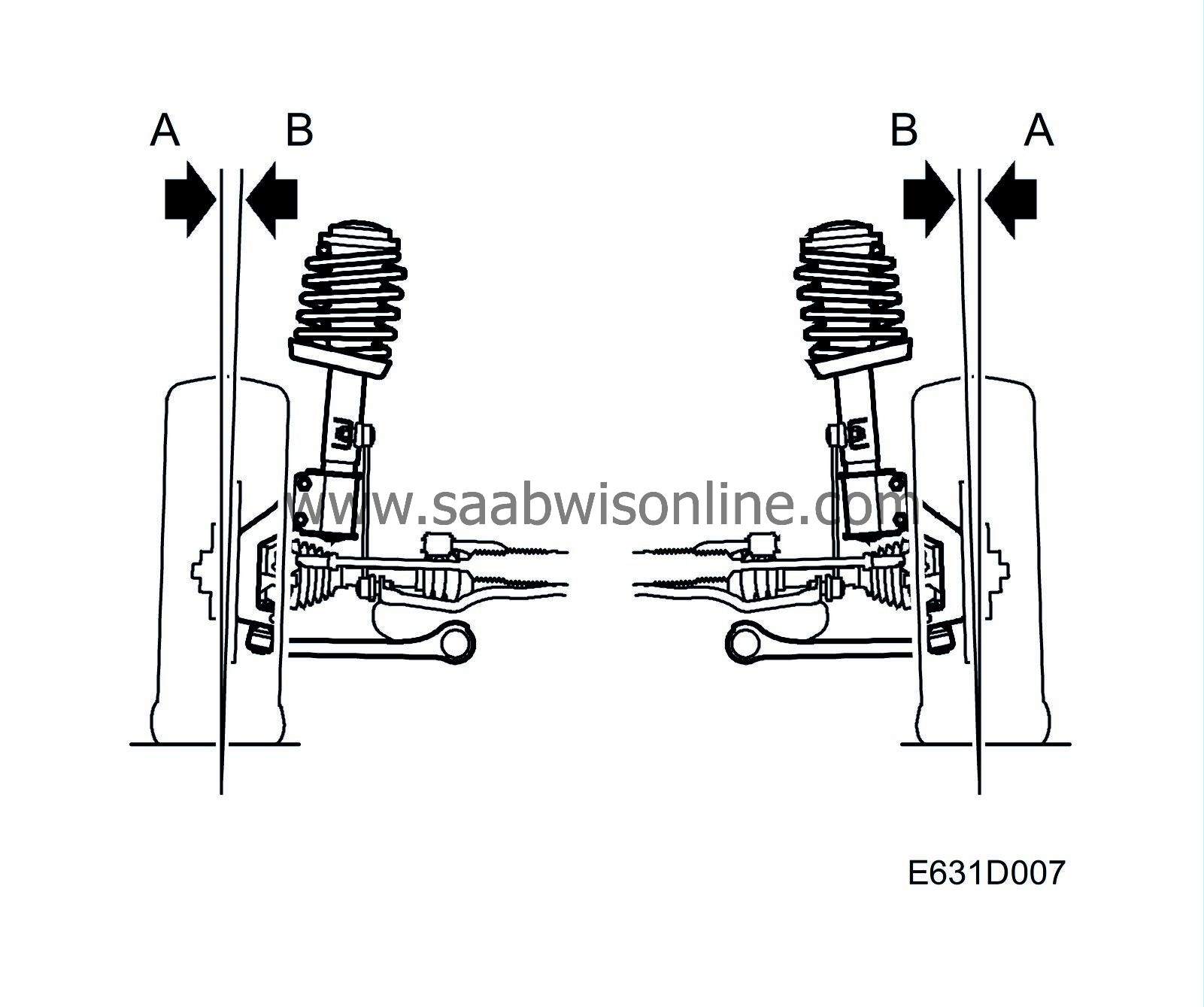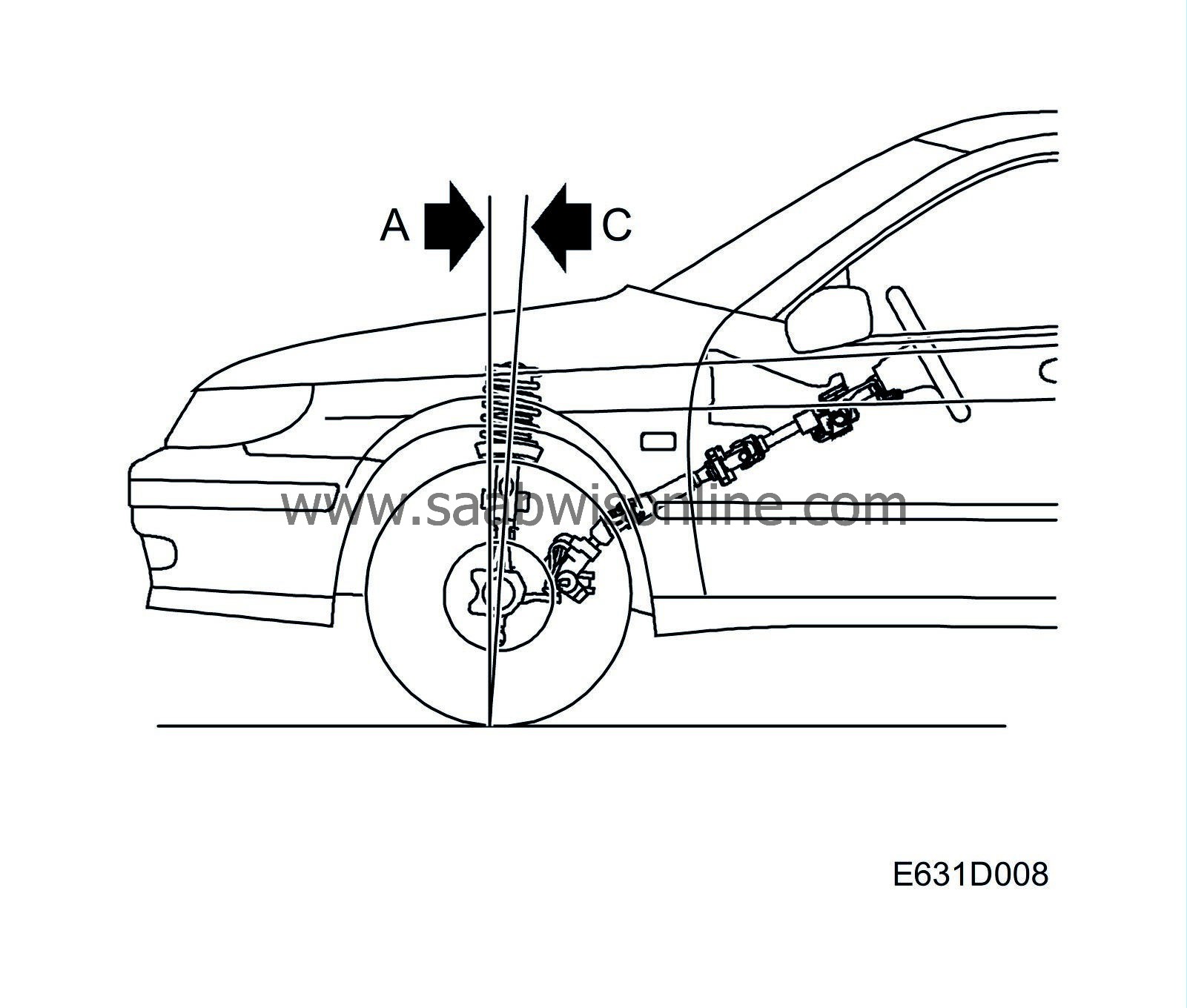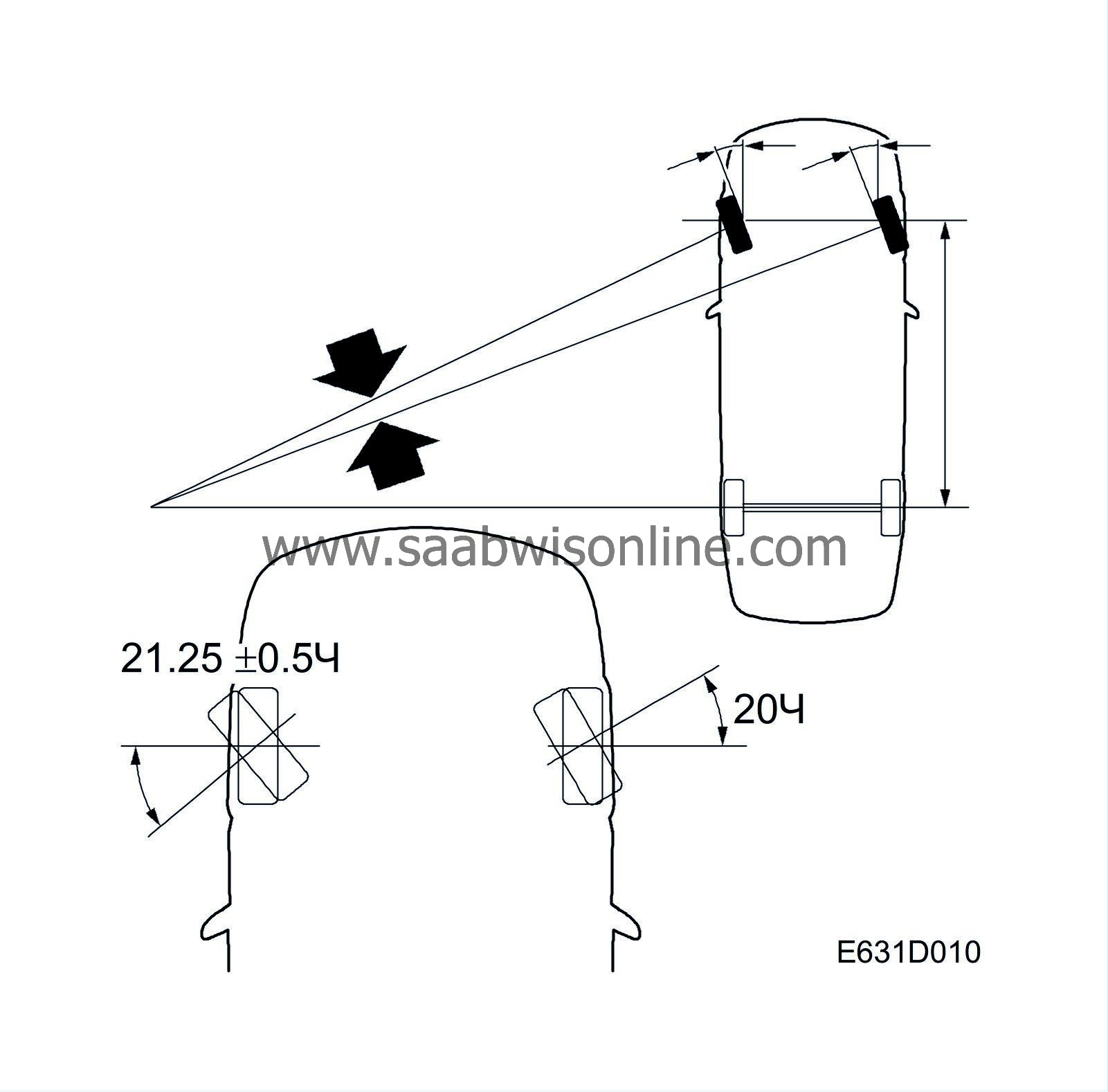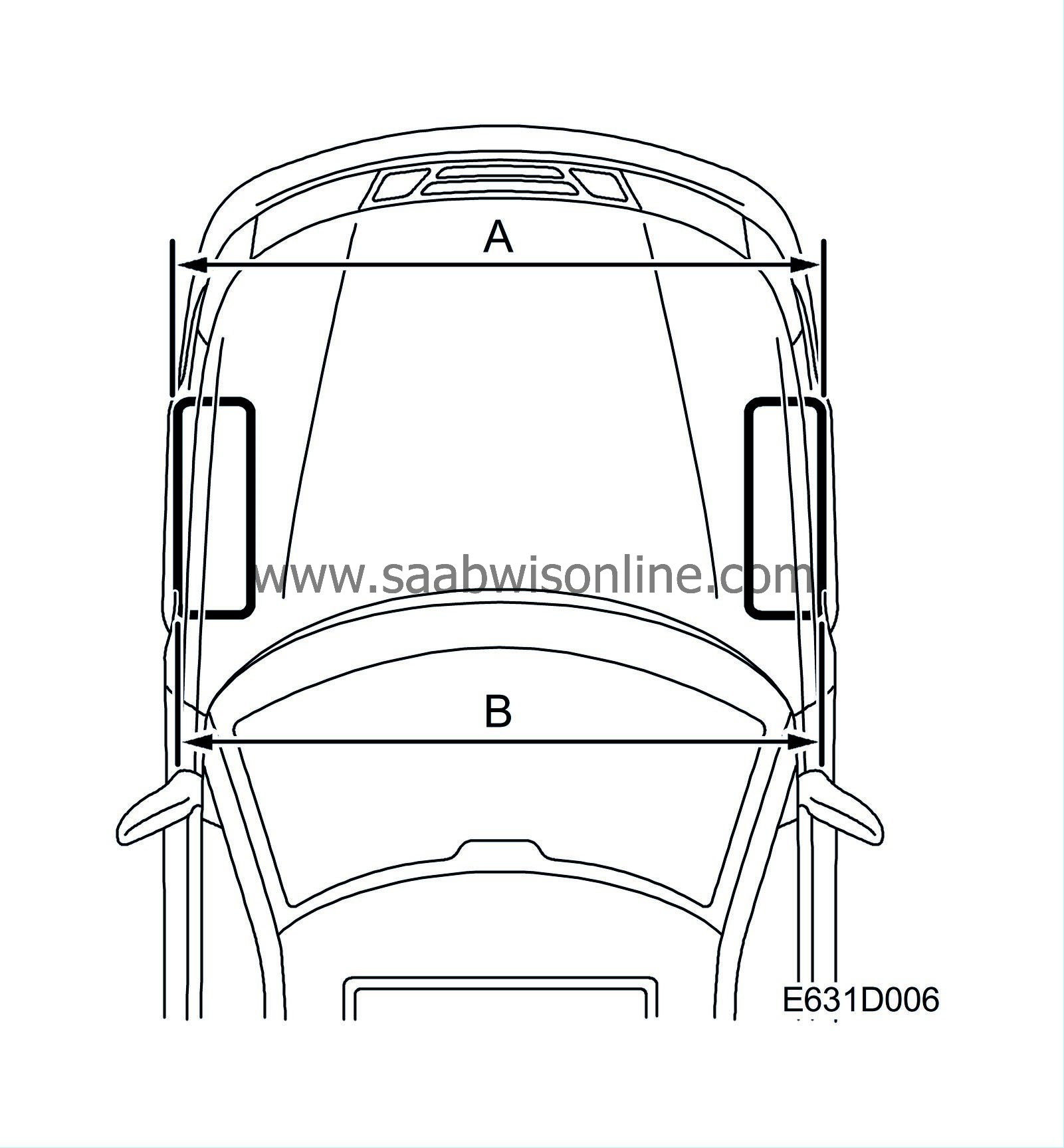Wheel geometry
| Wheel geometry |
| Toe-in |
Toe-in is the difference between A and B. If the wheels are exactly parallel, with the two dimensions A and B equal, toe-in will be zero.
Toe-in must always be positive, that is to say dimension B must be greater than dimension A. B less A = positive toe-in.
Front wheel toe-in is adjusted by lengthening or shortening the track rods. Correct toe-in improves directional stability. Toe-in must be adjusted by an equal amount on both left-hand and right-hand track rods to ensure that the steering wheel spokes will be positioned symmetrically.
Rear wheel toe-in is adjusted by moving the longitudinal links attached to the body outwards (to reduce toe-in) or inwards (to increase toe-in). Rear wheel toe-in is always measured relative to the car's axis of symmetry. The axis of symmetry is an imaginary line drawn between the centre points of the front and rear axles.
In connection with wheel alignment, equipment for 4-wheel measurement must be used because the rear wheels must be aligned before the front wheels and serve as reference points for the front wheels. The car's behaviour on the road is dependent on correct alignment of the wheels.
Incorrect toe-in gives rise to vibration which leads to increased tyre wear as the tyres then scrub sideways. Excessive toe-in often causes wear on the outer shoulders of the tyres.
| Camber |

Camber refers to the angle (B) formed between the wheel and the vertical (A), see figure.
If the wheel leans outwards, the camber is said to be positive (+) and if it leans inwards the camber is said to be negative (-). Wheel camber on the Saab 9-5 is negative.
Wheel camber cannot be adjusted.
| Castor |

Castor is the angle at which the swivel pin axis (C) deviates from the vertical (A) when viewed from the side, It is given in degrees.
When the swivel axis is inclined rearwards, as shown, castor is said to be positive (+) and when inclined forwards it is said to be negative (-). The Saab 9-5 has positive castor.
Castor tends to keep the wheels pointing in the straight-ahead position and so helps the driver to steer a straight path. In addition, more powerful steering wheel return action is obtained with a greater castor angle.
Castor is not adjustable.
| Swivel pin inclination |

Swivel pin inclination is the angle between the swivel axis (D) (an imaginary line running through the ball bearing in the upper spring cup and the steering swivel member's ball joint) and the vertical (A). It is given in degrees.
Inward inclination is positive and outward inclination is negative. Correct inclination makes for lighter steering and tends to keep the wheels pointing in the straight-ahead position. Swivel pin inclination on the Saab 9-5 is positive.
Swivel pin inclination cannot be adjusted.
| Steering angle |

The ideal steering angle for perfect rolling of all wheels when cornering varies with the speed of the car and the tightness of the turn, owing to suspension movement and deflection of the tyres.
Since the steering arms point slightly inwards in relation to the direction taken by the car, the angle of the inside wheel when cornering will be slightly greater than that of the outside wheel.



